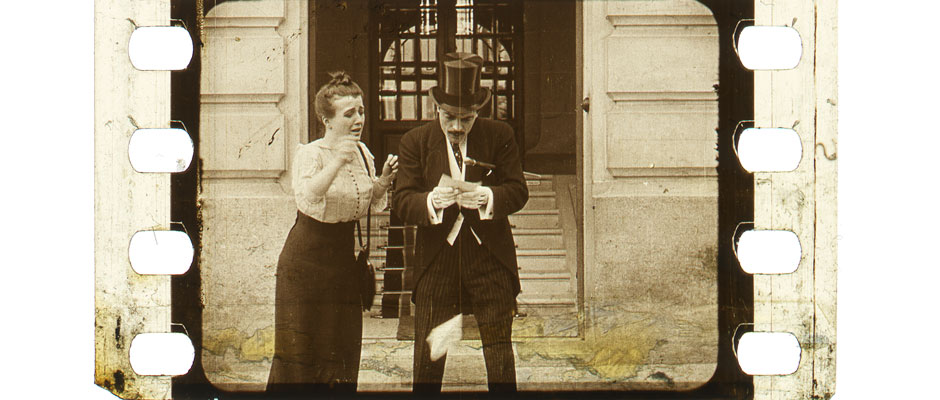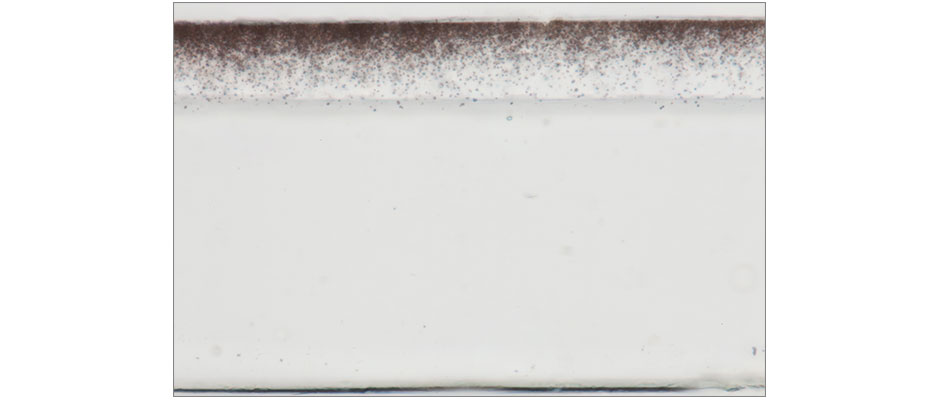


35mm sulfide-toned print (sepia) on cellulose nitrate support.

Silver particles have been chemically converted.
Process DescriptionA toned film consists of a colored image embedded in a layer of colorless gelatin. In contrast to tinting, toning only affects the developed (dark) parts of the image, rather than the entire film base. Two primary methods were used to tone the image silver. The first, metallic toning, involves replacing image silver with a colored metal salt. The most popular of these were silver sulfide (sepia), iron ferrocyanide (also known as Prussian blue), and copper ferrocyanide (red-brown). The second primary method was dye toning, also known as mordant toning. Dye toning requires conversion of the image silver to a colorless salt which acts as a mordant. The mordanted image is treated in a basic dye solution, and dye molecules bind to the mordant, producing a colored image. Dye toning extended the range of colors that could be used to tone images. The toning of motion picture film began in the 1890s and was most popular in the 1910s and 1920s. Toned films could also be tinted, often creating stunningly beautiful color effects. Metallic-toned images tend to be more stable than organic dye-toned images. |
|